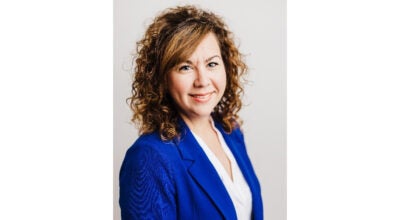Market to multi-generational customers
Published 9:30 pm Friday, June 23, 2017
The customer base today is made up of people from multiple generations.
Some businesses due to their products or services have a niche and serve a limited audience. However, many businesses must understand all consumers of varying ages in order to convert them to customers. There are basically 5 generations now living that make up our population.
There are many differences in people, what they want, motivations that drive their decisions, buying practices, etc. Older people often say that they don’t understand the younger generation and vice versa. It can become clearer when we consider the environment and experiences of each age group.
A summation of the multiple audiences we serve are outlined below. There are different names attached to each generation as well as the dates of birth that make up each group. Included is a description of their traits. Be aware that people on the border line of two generations may possess qualities of either or both.
1. Silent Generation or Traditionalists. Generally this group was born between 1925 and 1945. The Great Depression and World War II were the most influential events that occurred during this time and had a tremendous life long effect. Journalist Tom Brokaw labeled the group as the Greatest Generation. They are less likely to make impulsive decisions and they seek out value for the money they spend. They are loyal and committed. Many of this group are still very active seniors and do not like to be regarded as old or dependent. They have money to spend but are very selective in purchasing decisions. Some in this group are very set in their ways and hard to please. They may be very averse to any changes in their life.
2. Baby Boomers. This group has birth dates between 1946 and 1964. Over 76 million consumers are living in this group. Focus is on hard work, individualism, and for some, social activism. Values are important with a focus on loyalty and a sense of community. This group is very interested in discounts and bargains. They care about what a business stands for. Many baby boomers are retired or soon will be retiring. They are reinventing retirement and often find other work after retirement from their primary job.
Many are working beyond the normal retirement age of 65 because of their good health and/or need for continued income. They have value to the company where they are employed and still have much to contribute. Following retirement some seek part time work because of the need for additional income, as this is the first group who often retires and are still in debt.
Others want the social interaction from the daily grind and will continue in a job to give back to the community and for mental stimulation. Their retirement is longer than their parents as they have a longer life expectancy. In fact, many will have a longer period of time in retirement than the number of working years.
Volunteering, traveling and consulting are some of the ways this group remains active and contributing to society. Spending time with grandchildren is a priority for many and there are increasing numbers who take on the parenting role for their grandchildren. This places additional financial, physical and emotional demands on them when they had planned for a less stressful time in their lives.
3. Generation X. People generally born between the early to mid 60s and ending in birth years between the late 70s to early 80s make up this group following the baby boomers. There are approximately 65 million Americans in this group.
This generation is at their earnings peak and also their highest spending years. They all own cell phones and regularly access social media. They are frequent users of Facebook. They are difficult to convince. “What’s in it for me?” is their theme. Low voting participation marks this group. Many were “latch-key” kids and often from homes with divorced parents, having a great influence on their attitudes regarding how they will shape their own families. This is the most educated generation to date.
4. Generation Y or Millennials. Demographers and researchers do not agree on precise dates for the start and end of this generation, but they are typically considered with birth dates from the early 80s to the mid 90s or early 2000s. They are also referred to as “echo boomers” because they are the children of parents born during the baby boom. This group consists of approximately 80 million people. They grew up on technology. They are more educated and unpredictable. They started out in their careers during a recession with oftentimes large student loan debt.They make purchases online in addition to in-store buying. This generation is more racially and ethnically diverse than previous generations.
5. Generation Z. This group is also known as post-millennials or the “I-Generation.” There are about 23 million people in this group, born generally between 1996 and 2012. This generation makes up 25.9 percent of the United States population, the largest percentage, and contributes $44 billion to the American economy. By 2020 they will account for one-third of the U.S. population, certainly worth paying attention to. The highly diverse environment they are growing up in will result in more internet savvy experts than their Gen Y forerunners. Higher level of technology provides more sophistication in academics with resulting accelerated achievement. They never knew life without cellphones, the internet, live streaming, etc. They want immediate gratification.
If your business has all of these groups as customers or prospects you have a very challenging job to market successfully across the generations. Market research can be very helpful in designing products and services to meet the needs successfully. Determine the market you are trying to serve and study the dynamics of the group. Customize your marketing to the demographics you have determined to be you’re primary market group. Be sensitive and aware of the changing lifestyle choices by staying close to the customer.
Becky Vaughn-Furlow retired from Trustmark Bank as executive vice president and human resources director. She can be contacted by emailing bvaughnfurlow@gmail.com.





